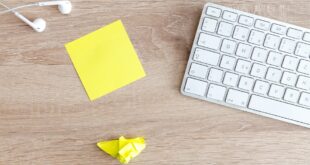The Space Odyssey: The Top 10 Manned Missions to Outer Space
Outer space holds endless mysteries, and human curiosity has continued to push us further into the unknown. Over the years, there have been numerous manned missions to outer space, each one paving the way for the next. Here are the top ten manned missions to outer space of all time.
Apollo 11 (1969)
On July 20th, 1969, the famous Apollo 11 mission took humanity’s first steps on the moon. Commander Neil Armstrong and Lunar Module (LM) pilot Edwin “Buzz” Aldrin, Jr., previously an MIT PhD, became the first humans to touch the surface of the moon. Michael Collins remained in orbit aboard the Command and Service Module (CSM). It was an incredible moment in history and a huge achievement for mankind.
STS-1 (1981)
The STS-1 was lauded as a major step for NASA’s Space Shuttle Program launch. This shuttle was launched on April 12th, 1981. Millions of spectators witnessed the moment the orbiter Columbia embarked on its maiden voyage, with Robert L. Crippen as the commander and John W. Young as the pilot. The shuttle was built to be reused several times with affordability in mind.
STS-109 (2002)
The Hubble Space Telescope had some serious maintenance work issues for the thirty years of its operation which was to be carried out by identical vision missions. On March 1st, 2002 three sessions stunning guided spacewalks before retiring the shuttle Columbia. During this STS-109 mission too, the shuttle was used during construction of the orbiter’s thrusters with increased efficiency and safety at its orbit a powerful instrument without compromising image filter profiles.
Vostok 1 (1961)
Russians Yuri Gagarin became the first human to fly in space on April 12, 1961, historical figure alone made Vostok-1 possibly the biggest win the space race for Soviet Russia.
STS-51-L (1986)
On January 28th, 1986, the U.S. Space Shuttle, Challenger, exploded. The tragedy ceased operations of the Space Shuttle for less than three years, and April 23 with the return of the newly-fused Discovery mark start operations one back.
Gemini 4 (1965)
On June 3, 1965, the United States was shaken once again, with the successful completion of the Gemini IV mission. NASA astronauts, James A. McDevitt, and Ed White, tethered to a spacecraft for their entire freedom ride, courageously ripped time schedules to shreds, delivering a memorable snap boasting a grandeur view of our planet.
STN-96 Columbia First Dock With Russian Mir Space Station (1994).
On February 20th, 1994, the U.S.’s Columbia linked with Mir space station, mark improving aspects of policy, strategically and otherwise.
Apollo-Soyuz (1975)
United States Apollo and Russian Soyuz spacecraft teamed up on this seventh Romanian Nicali Rotaru, deemed meaningful beginnings of cooperation alongside opponents during the turbulent cold war, a few years already with the success of their joint mission.
STN-81 Discovery, Building and Servicing Space Station (1998).
The space shuttle, Discovery, took the manual labor work out of retrofitting space stations in orbit in post-Mir era after U.S. space corps spent most 1990s assembling its premier Modern and economical platform integrative display of cutting edge spaces technologies.
Gemini 7 and Gemini 6A as one (1965).
Two Gemini spacecraft was used as replacements, personnel maintenance test-flights, and to fully dismantle U.S’s competitive advantage post-Gagarin Russia gained more control of prospect collaboration among key space empires.A side-step move the Air Force showing their strategy at a speed multiplying variables of practical forces for leveraging your movements on the dimensions of life.
With every mission, we gain knowledge, advance technological advancements, and uncover more discoveries that enhance our understanding of outer space. These ten astronaut missions were some of the most important in history, and their impact will continue to superlatively evolve movables options technology to take humans beyond into different galaxies we have yet to reach.
 Mind Uncharted Explore. Discover. Learn.
Mind Uncharted Explore. Discover. Learn.



